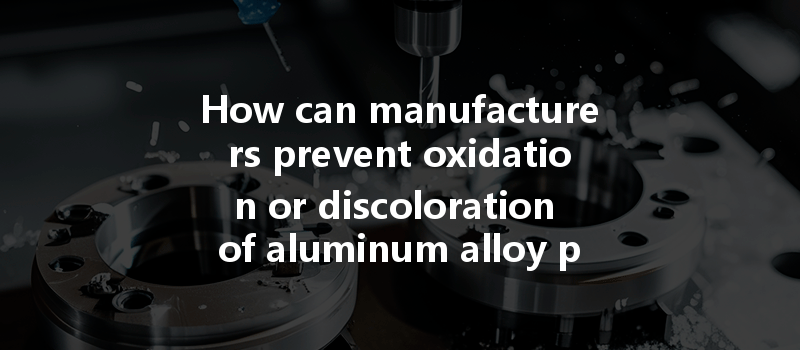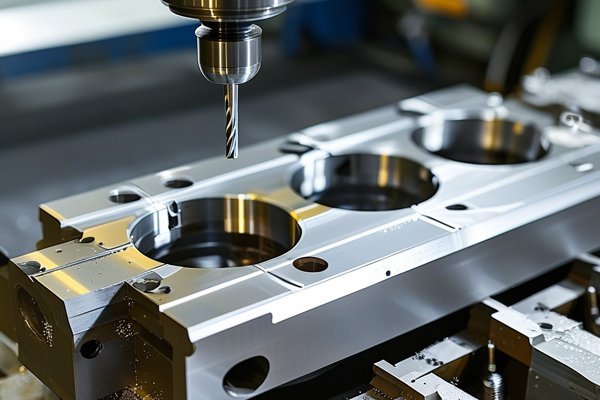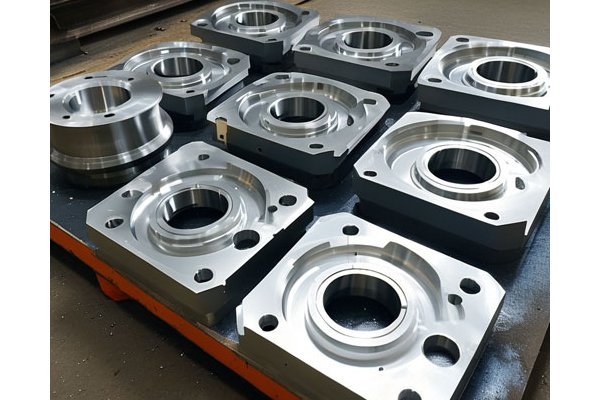:
Did you know that aluminum is the most abundant metal in the Earth’s crust? Despite its prevalence, the machining of aluminum alloys presents unique challenges, particularly when it comes to maintaining the aesthetic and functional qualities of the finished parts. An astonishing 70% of aluminum is recycled, highlighting its importance in various industries, from automotive to aerospace. Yet, one of the most significant issues faced by manufacturers working with aluminum alloys during CNC (Computer Numerical Control) machining is the oxidation and discoloration that can occur, leading to poor surface quality and increased costs.
In this blog post, we will dive deep into the causes of oxidation and discoloration in CNC-machined aluminum alloy parts, explore the critical steps manufacturers can take to prevent these issues, and discuss best practices for maintaining surface integrity.
Understanding Aluminum Oxidation and Discoloration
What is Aluminum Oxidation?
Aluminum oxidation is a chemical reaction that occurs when the metal reacts with oxygen in the surrounding environment. This reaction results in the formation of aluminum oxide, which can appear as a dull, white coating on the surface of the metal. While aluminum oxide can provide some level of protection against further corrosion, it can also create an undesirable appearance that industries such as aerospace and automotive want to avoid.
Causes of Aluminum Discoloration
Discoloration can also arise from several factors during the CNC machining process:
Importance of Preventing Oxidation and Discoloration
Preventing oxidation and discoloration is vital for several reasons:
Solutions for Preventing Oxidation and Discoloration
To effectively prevent oxidation and discoloration of aluminum alloy parts during CNC machining, manufacturers should implement a comprehensive strategy that includes meticulous planning, machining techniques, adherence to environmental controls, and post-processing treatments. Below, we offer a detailed exploration of these solutions.
A. Choose the Right Cutting Tools
Selecting the appropriate cutting tools is essential for reducing heat generation and avoiding oxidation:
B. Control Cutting Parameters
Cutting speed, feed rate, and depth of cut must be optimized for aluminum alloys:
C. Minimize Tool Wear
Monitoring tool wear is vital to avoiding unintended heat generation. Regular inspections can help ensure tools remain sharp and effective.

Effective cooling is key to minimizing oxidation during CNC machining.
A. Use Appropriate Coolants
Choosing the right coolant or lubricant can significantly impact surface quality:
B. Employ Flood Cooling
Flood cooling remains one of the most effective techniques. It provides consistent cooling across the workpiece, minimizing heat accumulation during prolonged machining.
Minimizing the exposure of aluminum parts to environmental factors can substantially reduce the risk of oxidation:
A. Anodizing
Anodizing creates a layer of aluminum oxide on the surface that is thicker than naturally occurring oxide. This not only improves corrosion resistance but can also enhance aesthetics.
B. Protective Coatings
Applying protective coatings (like clear lacquers or paints) can provide a barrier against environmental elements, further preventing oxidation.
C. Cleaning Processes
Post-machining cleaning is essential. Using mild alkaline or acidic solutions can remove residues and oxidation, ensuring parts are ready for further processing.
Ensuring that operators are well-trained on the importance of preventing oxidation and discoloration can lead to better practices and outstanding results. Continuous education focusing on recognizing early signs of oxidation and understanding the effects of various machining conditions is essential.
Testing and Evaluation
To ensure the effectiveness of employed strategies, establishing a robust testing and evaluation process is crucial. This includes:
Preventing oxidation and discoloration during CNC machining of aluminum alloy parts is essential for maintaining product quality, aesthetic appeal, and cost efficiency. By optimizing machining processes, implementing effective cooling techniques, controlling the work environment, utilizing post-processing treatments, and fostering training and awareness, manufacturers can significantly reduce the incidence of these issues.
As we’ve explored, the importance of maintaining the aesthetic and functional integrity of aluminum parts cannot be overstated. Staying proactive and implementing comprehensive solutions will position manufacturers to succeed in delivering high-quality products that meet the demands of the industry.
The strategies outlined in this blog are not only actionable but represent a commitment to excellence in CNC machining. In today’s competitive landscape, manufacturers must think critically about every aspect of their processes to remain ahead. Focus on the prevention of oxidation and discoloration, and invest in the knowledge that will pave the way for innovation and enduring success in machining practices.






